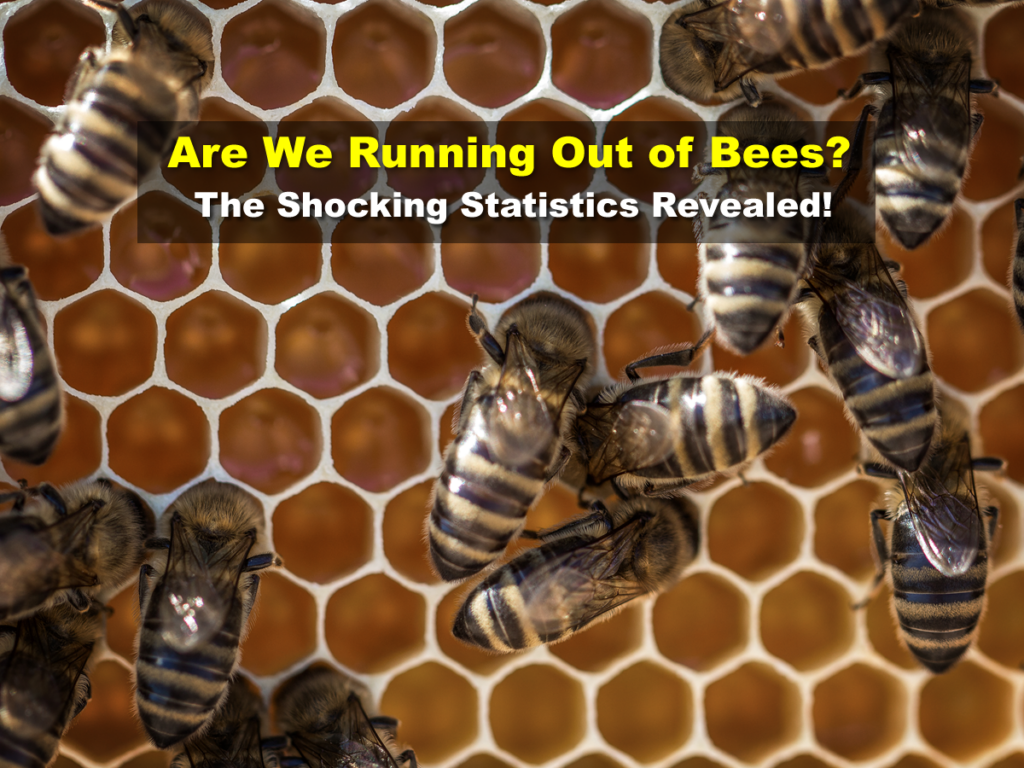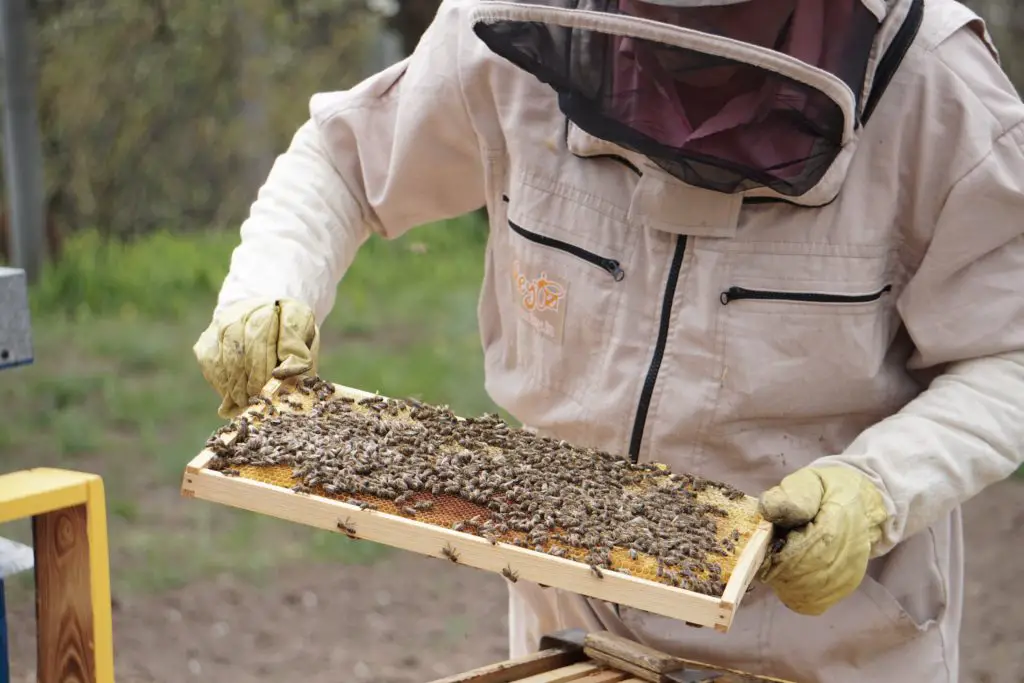Affiliate Disclaimer - As an Amazon Associate I earn from qualifying purchases.
It supports the website. So, Thank you
No matter where you live, unless you’re at a research station in Antarctica, you’ll be used to seeing bees in spring and summer. They’re among one of the most common flying insects and there are lots of different species. But have you ever wondered how many bees are in the world?
It’s thought that there are more than 20,000 species of bees and collectively, there could be as many as 2 trillion individuals across these species. Consider that there are only 8 billion humans on the planet, and it’s easy to see just how large the bee population is.
But despite these incredibly large numbers, there are some bee species that are facing endangerment. Bees are incredibly important to the ecosystem so it’s vital that we protect them.
Table of Contents
Where Are Bees Found?
Bees are found all over the world. Their primary goal in life is to seek out flowering plants to collect pollen and nectar. Therefore, where there are flowering plants, there’s a good chance there will also be bees.
Depending on where you are in the world, the various species of bees you will see will differ. However, for the most part, bees are found on every continent apart from Antarctica simply because of the lack of flora and the extreme temperatures.
It’s also worth pointing out that while there may be a few flowering plants in desert areas, it’s unlikely that you’ll find bees here owing to the extreme conditions.
How Many Bee Families Are There?
There are seven families of bees and each of these has its own group of species. The largest bee family is called Apidae and is made up of more than 5700 different species. The other bee families are:
- Megachilidae
- Melittidae
- Halictidae
- Andrenidae
- Colletidae
- Stenotritidae
How Many Species Of Bees Are There?
As I have mentioned, each of the families of bees contains a number of species with the largest having more than 5700. However, in total, it’s thought that there are around 20,000 or more species of bees in the world.
How Many Bees Are In The World?
While it would be impossible to accurately count the number of individual bees in the world, it is believed that there are around 2 trillion. Much of this estimate is based on what we know about managed hives around the world and the number of bees within each of these. Of course, those that are wild could far outnumber what is suggested.
How Many Bees Are In A Hive?
The number of bees in a colony varies by species. For example, the bumble bee does not tend to nest in large numbers and you’ll typically find no more than 250 individuals in a nest. However, this is at the extreme end of things and in most bumble nests, there will more likely be between 50 and 150 bees.
On the other hand, some species, such as the honey bee, nest in incredibly large numbers. An individual hive usually contains somewhere between 20,000 and 60,000 individual bees. That said, there are some mega hives that may contain 100,000 bees!
Are Bees Going Extinct?
Unless you’ve been living under a rock for the past few years, I would imagine that you’ve seen or heard some information on saving the bees. This isn’t just some PETA cause that nature lovers have jumped on board with; it’s a real issue faced by many bee species.
Out of the 20,000 or more bee species, it’s thought that as many as 150 species may be at risk of extinction, according to the IUCN Red List.
That may not sound like a huge number but you have to consider the impact that their extinction would have on the ecosystem and even on the human economy. You see bees pollinate more than 70% of all human crops meaning that, if they were to go extinct, agriculture would never be the same again.
But what’s really disturbing is that humans are largely to blame for the rapid decline in bee numbers. We’re essentially making a rod for our own backs.
Think about it, things like habitat destruction play a significant role in the decreasing bee population and it’s humans that are eating up this land with things like housing developments and deforestation.
Global warming has also made it difficult for bees, throwing them out of their usual routine due to changing temperatures, longer seasons and other factors. And who is to blame for global warming; that’s right, we are!
Thankfully, humans aren’t totally at fault. One of the biggest threats to bees is parasites and diseases.
While humans have a lot to answer for, this doesn’t mean that we can’t play an important role in helping to increase bee numbers and giving them back their habitat. I’m not saying that we have to go to extreme measures but if each of us created a bee-friendly area in our backyard, this could be enough to save dying populations. And all it requires is a log pile and some flowering plants.
Final Thoughts
We’re all used to seeing bees buzzing around outdoors but have you ever stopped to wonder how many bees are in the world?
The answer is an astonishing 2 trillion but of course, that is an educated guess. There might even be bee species that we aren’t yet aware of in the depths of the rainforest, for example.
With more than 20,000 species across seven families, you might think that bees are abundant. However, there are risks to these beautiful creatures and it’s up to us to make sure they don’t go extinct.




